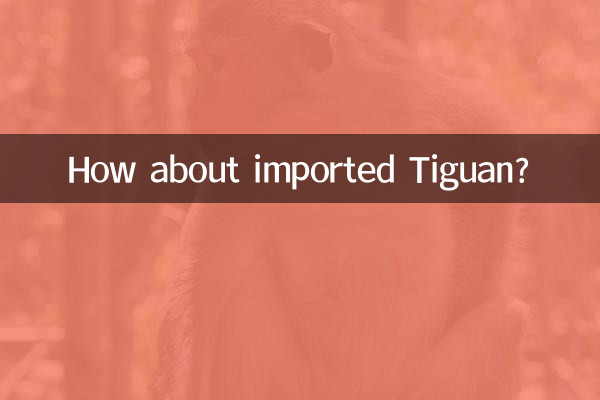How about imported Tiguan? Popular topics and in-depth analysis of the past 10 days across the Internet
Recently, the imported Volkswagen Tiguan has once again become one of the hotly discussed models in the automotive industry. As a classic SUV owned by Volkswagen, its imported version is different from the domestic version in terms of configuration, performance and quality, which has triggered widespread discussion among consumers. The following is an in-depth analysis based on hot spots across the entire network in the past 10 days, using structured data to show you the true performance of the imported Tiguan.
1. Comparison of core parameters of imported Tiguan (2023 model)

| project | Imported Tiguan R-Line | Domestic Tiguan L |
|---|---|---|
| engine | 2.0T high power (220 horsepower) | 2.0T low/high power (186/220 horsepower) |
| gearbox | 7-speed wet dual clutch (DQ500) | 7-speed wet dual clutch (DQ381) |
| Wheelbase (mm) | 2681 | 2791 |
| four-wheel drive system | 4MOTION full-time four-wheel drive | Timely four-wheel drive (some models) |
| Starting price (10,000 yuan) | About 35.8 | About 21.58 |
2. Focus on recent hot topics
1.Configuration dispute:Netizens are hotly discussing that the imported version comes standard with R-Line sports kit, matrix headlights, DCC dynamic chassis and other configurations. However, the car system still uses the old version of MIB2.5, and its intelligent performance is inferior to that of domestic models.
2.Price fluctuations:Affected by the exchange rate, some dealers have lowered their quotations by 20,000 to 30,000 yuan, but the landing price is still about 100,000 yuan higher than the domestic top model, and cost-effectiveness has become a focus of discussion.
3.Off-road performance:The imported version produced in the German factory has a stronger body, is equipped with a full-time four-wheel drive system, and has a wading depth of 500mm measured on platforms such as Douyin/Kuaishou, attracting the attention of outdoor enthusiasts.
3. Big data on word-of-mouth of car owners (sampling in the past 10 days)
| Evaluation dimension | Positive rating | Main comments |
|---|---|---|
| Power performance | 92% | Linear acceleration, easy overtaking at high speeds |
| Chassis texture | 88% | Advanced vibration filtering, European adjustment style |
| Space comfort | 76% | The rear row is not as spacious as the extended version |
| Fuel consumption performance | 82% | 7.2L/100km on the highway, 9.8L in the city |
4. Purchase suggestions
1.Suitable for the crowd:Users who pursue the authentic German driving experience, often drive long distances or have a strong need for four-wheel drive.
2.Things to note:The waiting period for imported models is longer (about 2-3 months), and the subsequent maintenance costs are about 30% higher than that of domestic models.
3.Comparison of competing products:In the same price range, it is necessary to compare the Volvo XC60, BMW X1 and other models. The imported Tiguan is superior in mechanical quality, but its luxury is slightly inferior.
5. Industry Trend Forecast
According to data from the automotive vertical platform, with the impact of new energy vehicles, search volume for imported Tiguan has dropped by 15% year-on-year in the past three months, but it still has a stable audience. A plug-in hybrid version may be introduced in 2024, and the pure electric range is expected to reach 80km (WLTC standard).
To sum up, the imported Tiguan is a model with distinctive features. Its core advantages lie in the pure German driving experience and more reliable mechanical quality, but it needs to pay an extra premium for its "originally imported" status. Consumers should weigh their choices based on actual needs.

check the details

check the details